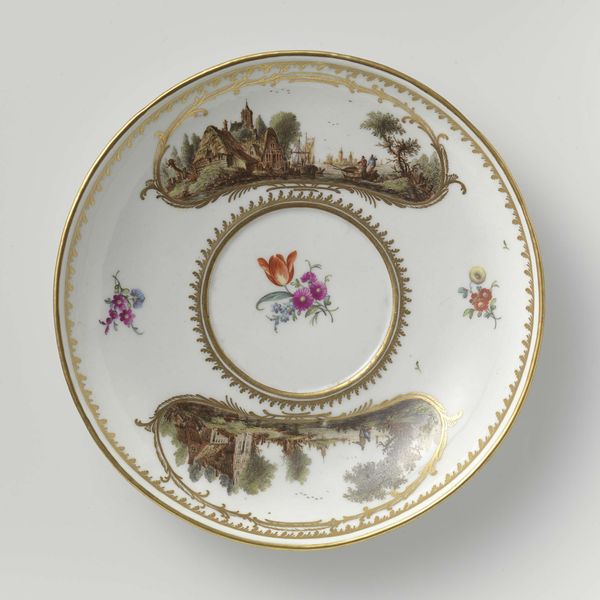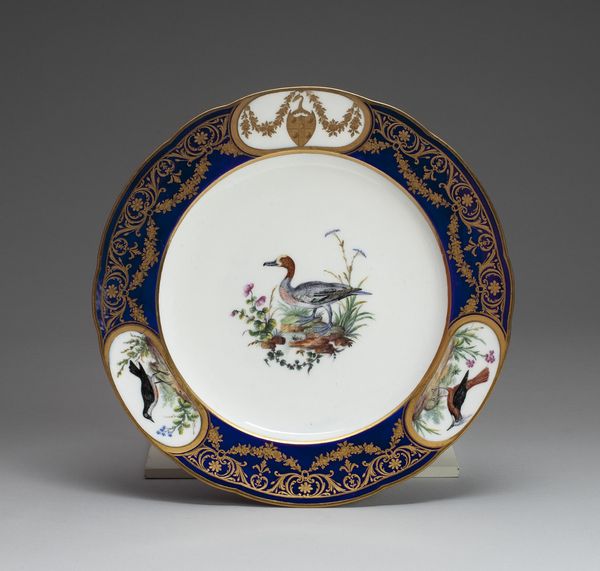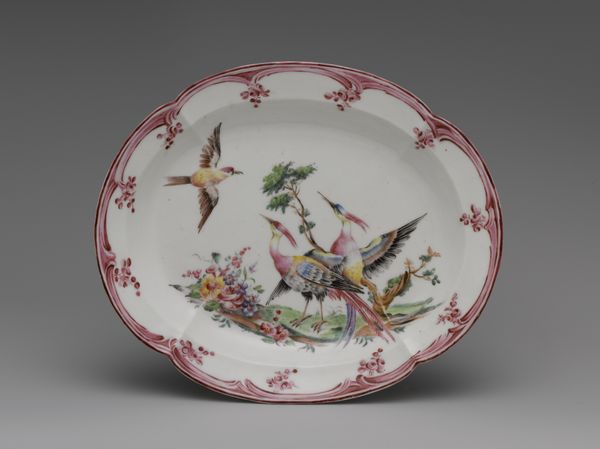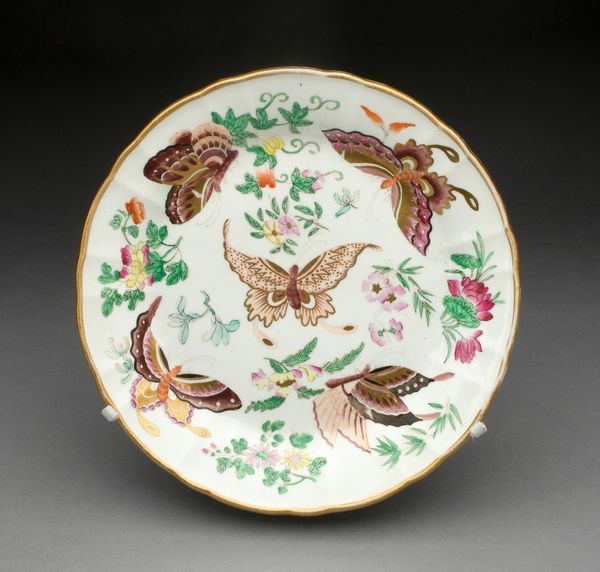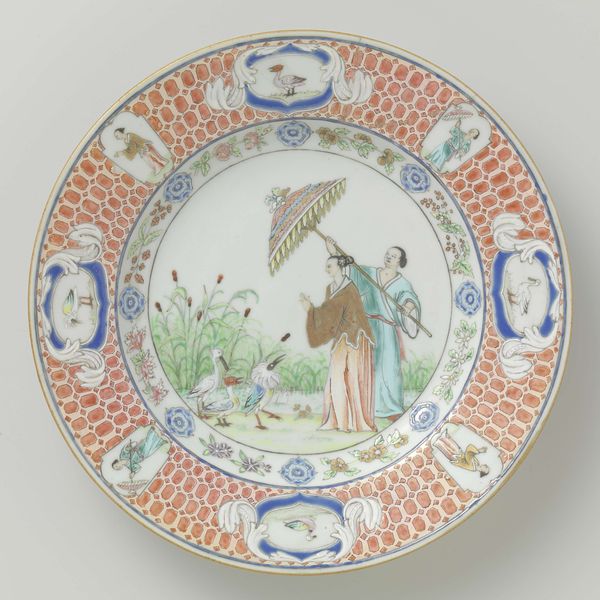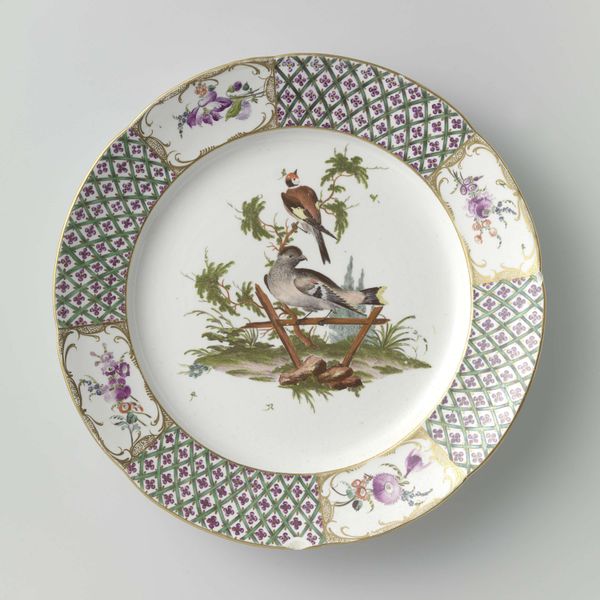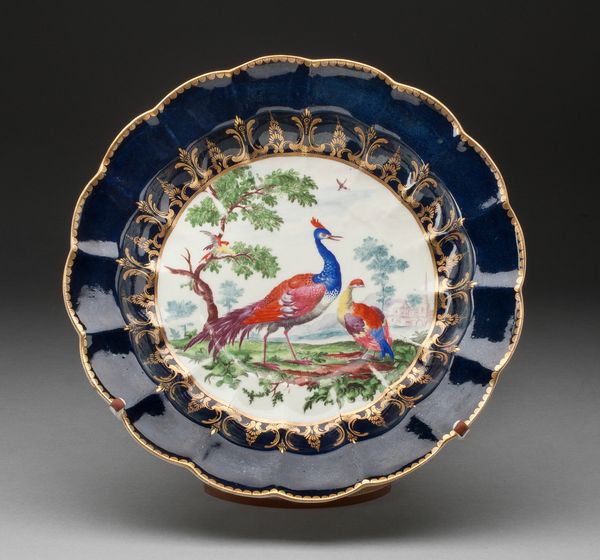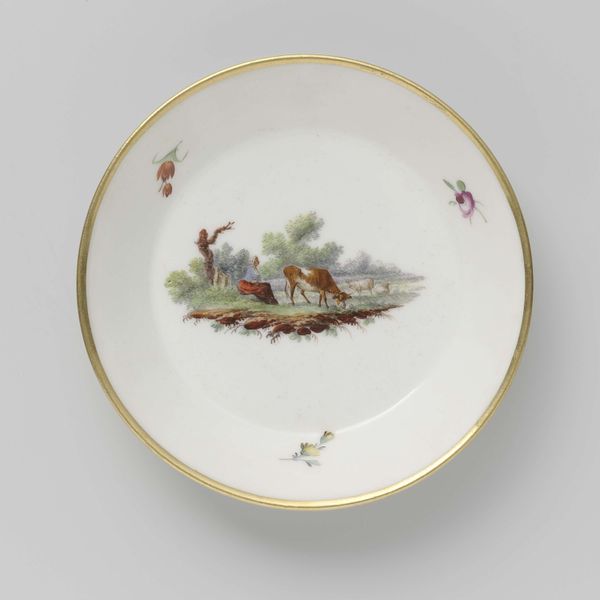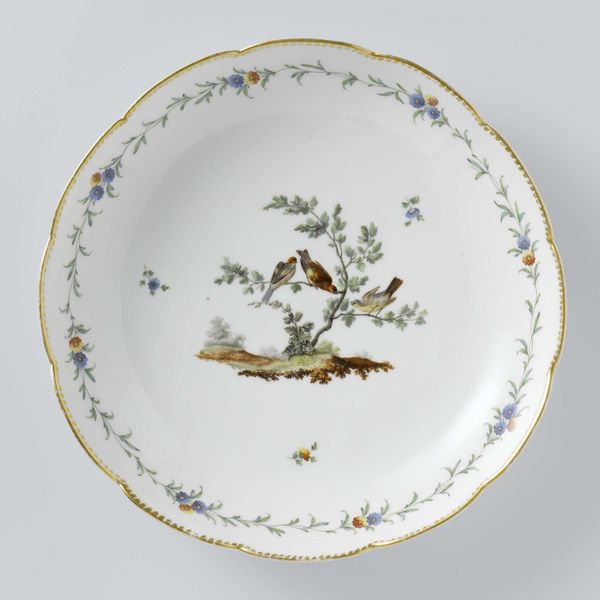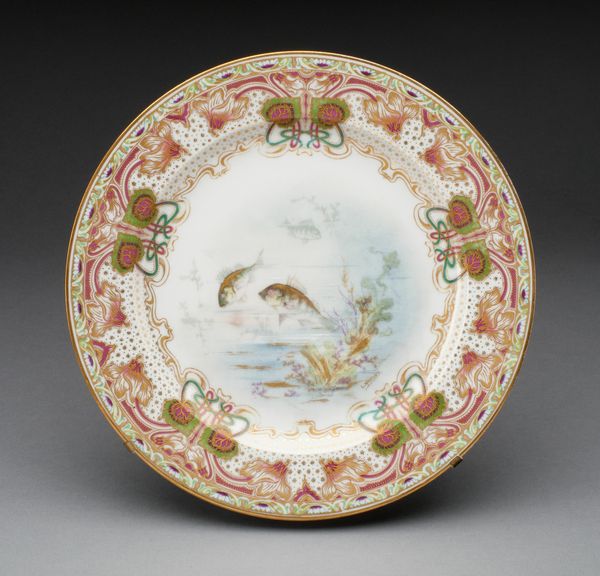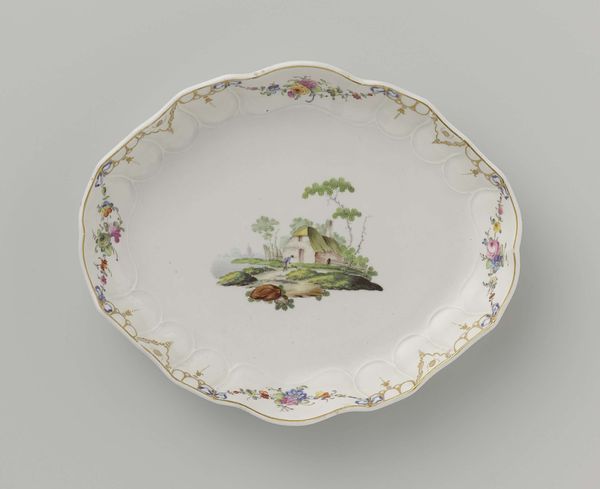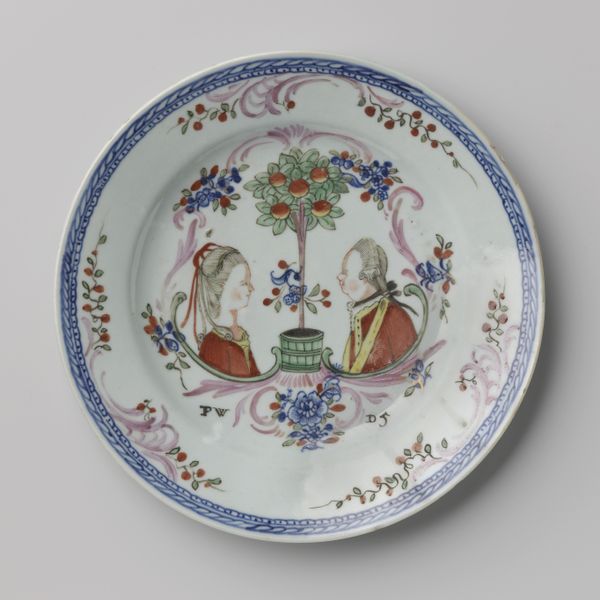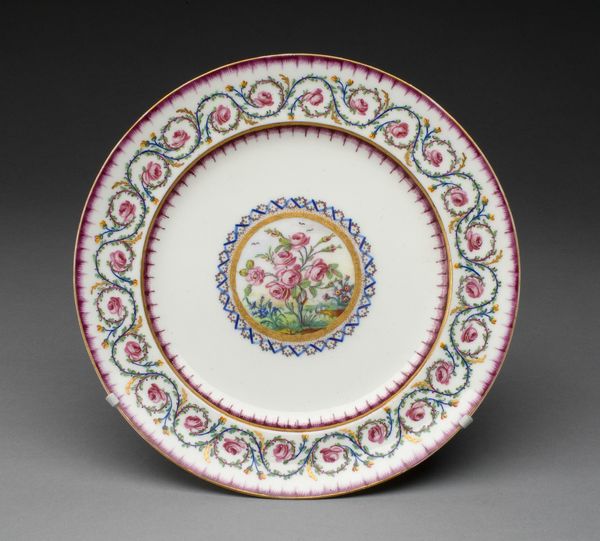
Dimensions: height 2.9 cm, diameter 14.3 cm
Copyright: Rijks Museum: Open Domain
Curator: Here we have a delicate porcelain cup and saucer crafted before 1783 by the Porseleinfabriek Den Haag, currently residing at the Rijksmuseum. Editor: Oh, isn't it charming? It whispers tales of elegant tea parties and hushed conversations. I immediately envision ladies in powdered wigs holding this. Curator: Indeed. The rococo style is quite evident in its decoration. Observe the carefully rendered genre painting featuring two birds, one in flight and one perched amidst stylized foliage. The rim is also decorated with blue paint. It represents a fascinating intersection between industrial craft and artistry. Editor: Yes, it's delightful. And these colors are exquisite; look at that mauve mixed with ochre in the flying bird. It is very lively for something so... restrained by function. I wonder about the artist. What kind of life did they lead? Was there passion there? Curator: These cups were produced at the factory, meaning it would be an atelier setting, with many hands on each product. The division of labor allows for specialisation in specific roles, as some specialised on painting floral ornaments, others whole landscapes. Think about that when reflecting on the individuality of the art; consumption practices shaped production massively. Editor: Oh, a porcelain assembly line! Still, to be one of those hands... applying those miniature details... Does it tell us something about their aspirations? Like, painting this rural scene on something used indoors to drink tea and look outward toward nature from inside? Curator: That contrast, that tension, is precisely the kind of dialectic that helps one understand the societal value of production like this. To possess an item like this indicated elevated taste and purchasing power. The detailed painting serves not only aesthetic purpose, but symbolic purposes for display within the house. Editor: It almost seems tragic, now that I think about it. Beauty trapped in practicality... a spirit confined to the role it fulfills. The birds want to be free! Or maybe, to just go along with the current... fly, drift! Curator: Interesting you say that. From a materialist point of view, one might even argue that the constraints *are* the condition of its expressiveness. What else could such a piece even be expressing were it divorced from those constraints? Editor: It really invites one to think! Thanks for this chat. Curator: Thank you, and it also allows one to delve deeper into the dynamics between artistic expression, industrial processes, and consumption.
